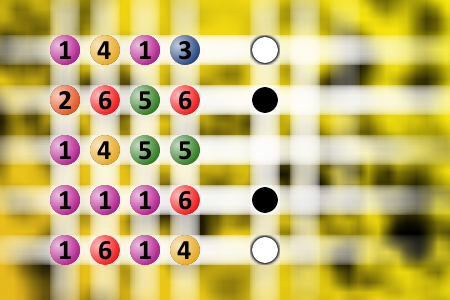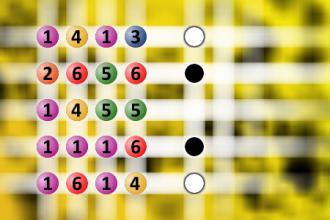Find the right combination
The computer chose a secret code (sequence of 4 digits from 1 to 6). Your goal is to find that code. Black circles indicate the number of hits on the right spot. White circles indicate the number of hits on the wrong spot.Correct answers: 16
The first user who solved this task is Nasrin 24 T.
#brainteasers #mastermind

A man takes his place in the t...
A man takes his place in the theater, but his seat is too far from the stage.
He whispers to the usher, "This is a mystery, and I have to watch a mystery close up. Get me a better seat, and I'll give you a handsome tip."
The usher moves him into the second row, and the man hands the usher a quarter.
The usher looks at the quarter, leans over and whispers, "The wife did it."
He whispers to the usher, "This is a mystery, and I have to watch a mystery close up. Get me a better seat, and I'll give you a handsome tip."
The usher moves him into the second row, and the man hands the usher a quarter.
The usher looks at the quarter, leans over and whispers, "The wife did it."

